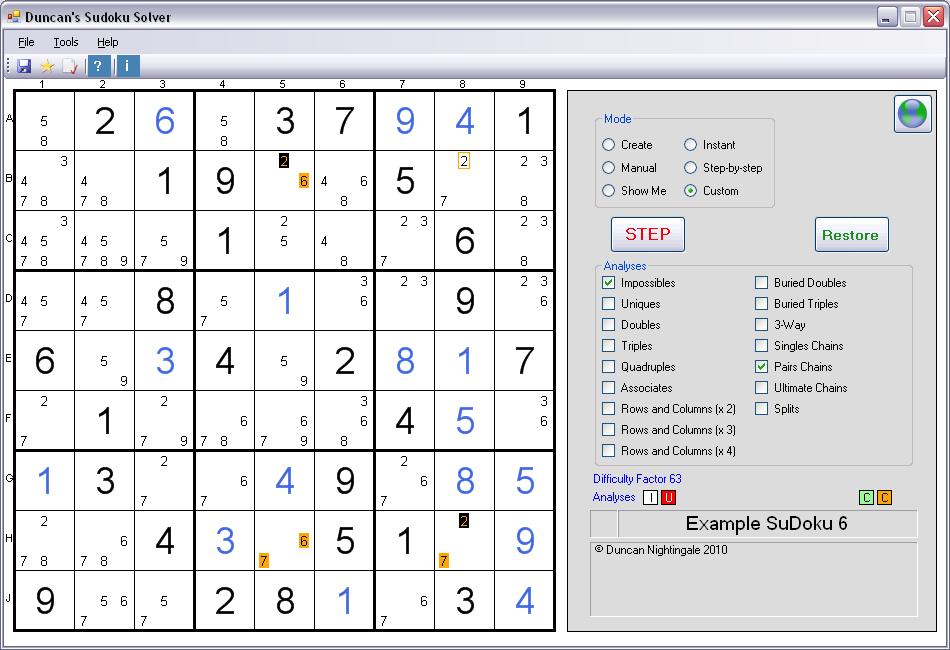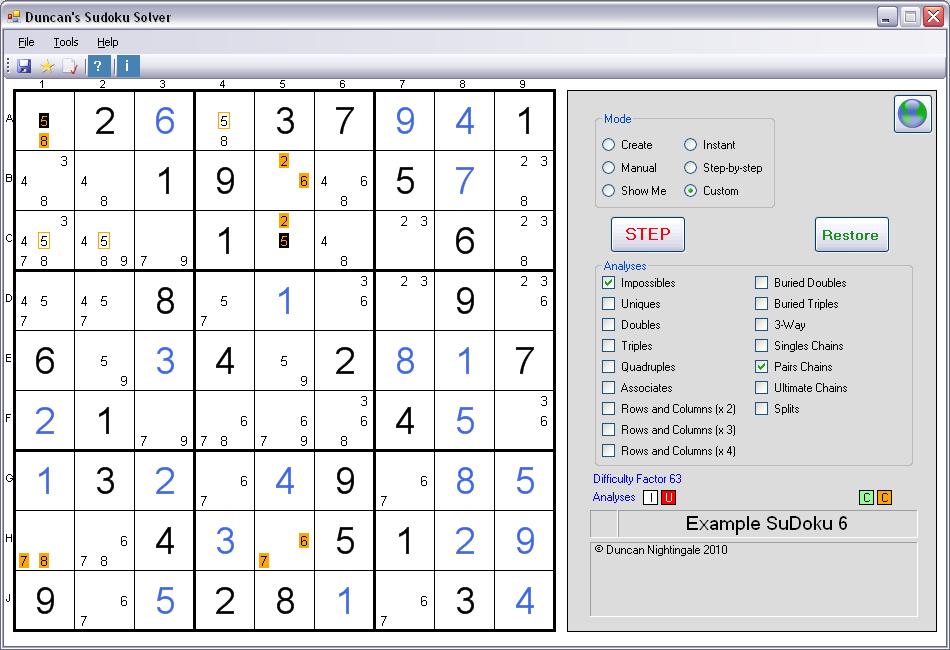Example of a Pairs Chain

This is a screenshot
Pairs Chain:
A linked Chain of paired
Possibles.
The ends of the Chain (coloured black) have the same value. The linking elements (coloured orange) may have different values.
If one end of the Chain is 'false', then the other must be 'true' and vice-versa. Any Possible that can 'see' both ends of the Chain
may be removed.In this example, the Pairs Chain has ends with value 2 and linking elements 6 and 7. When the Pairs Chain only comprises three Squares, as in this example, it is sometimes termed a "Y-Wing". The logic is as follows:
If the first end (B5) is NOT a 2,
then that same Square MUST be a 6,
and the next link (H5) CANNOT be a 6,
so the value of that Square MUST be a 7,
and the next link (H8) CANNOT be a 7,
so the value of the second end Square MUST be a 2.
The 'MUST be' links are caused by there only being two Possibles in the relevant Square.
The 'CANNOT be' links are caused by the normal SuDoku rule that Solution values cannot be repeated in the same Row, Column, or Box.
All this means that if one end of the Chain is NOT a 2, the other end MUST be a 2 and vice-versa. Or, to put it another way, one or other of the ends is guaranteed to be a 2. So any Possible 2 that can 'see' both ends is an impossible solution (outlined in orange) and may be removed. For a Possible to 'see' another Possible, it must simply be in the same Row, Column, or Box and have the same value.
Second Example of a Pairs Chain

This is a screenshot
In this second example, the Pairs Chain has ends with value 5 and linking elements 2, 6, 7 and 8.
Once again, the Chain ends are coloured black and the linking elements are coloured orange. The logic is as follows:If the first end (A1) is NOT a 5,
then that same Square MUST be an 8,
and the next link (H1) CANNOT be an 8,
so the value of that Square MUST be a 7,
and the next link (H5) CANNOT be a 7,
so the value of that Square MUST be a 6,
and the next link (B5) CANNOT be a 6,
so the value of that Square MUST be a 2,
and the next link (C5) CANNOT be a 2,
so the value of the second end Square MUST be a 5.
The 'MUST be' links are caused by there only being two Possibles in the relevant Square.
The 'CANNOT be' links are caused by the normal SuDoku rule that Solution values cannot be repeated in the same Row, Column, or Box.
All this means that if one end of the Chain is NOT a 5, the other end MUST be a 5 and vice-versa. Or, to put it another way, one or other of the ends is guaranteed to be a 5. So any Possible 5 that can 'see' both ends is an impossible solution (outlined in orange) and may be removed.